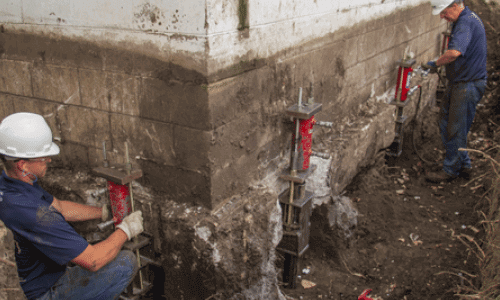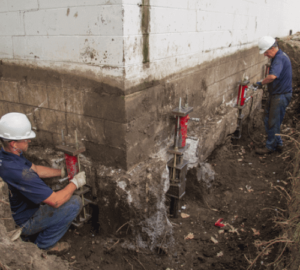Many waterside properties benefit from a dock, whether for boats, jet skis or simply relaxing and swimming. Dock building is a big project that requires careful planning, design, and construction. Contact Mountain Island Lake Dock Builder for professional help.
Initially, it’s important to determine the location of the dock. This includes water depth, hazards, and access requirements.
Whether you’re replacing an existing dock or building one on your property, there are many considerations to keep in mind. The size, location, and design of your dock are all important factors. Your choice of dock materials will also determine how long your dock will last. You’ll want to choose high-quality wood, and the hardware should be galvanized or stainless steel.
In addition, your dock should be equipped with a canopy to offer workers and vehicles protection from the weather. Another important factor is the height of the dock. If your dock is not tall enough, it can cause problems during the loading and unloading process. This is why it’s important to check with your local authorities to see if there are any restrictions or regulations on the height of your dock.
The number of docks must be decided in the planning stage, taking into account production factors, such as the time of day when most goods are received and the length of time required to transfer them from reception to dispatch areas. It is also important to consider the organisational aspects, such as the location of the docks within the warehouse and the distance between them.
It is preferable to have a single entry point to the warehouse, rather than multiple ones. This will reduce costs and facilitate operations. However, if this is not possible, it may be necessary to provide several access points to the warehouse. In this case, it is advisable to provide ramps between the dock and the warehouse building.
If the docks are located in an area prone to storms, they must be protected from water currents and surges. This is important, especially if there are boats tethered to them. In addition, the docks must be wind-proof and designed to withstand intense winds and high storm surges.
Another factor to consider is the accessibility of the docks. It is a good idea to have a dock with a level approach, and it should be slightly separated from the building to help drain rainwater. Moreover, it is a good idea to have a position for rejected trailers and containers near the dock doors.
Materials
When building a dock, the material chosen will determine its durability and longevity. A lower-quality material may be cheaper upfront, but it will succumb to damage more easily, resulting in costly repairs and replacements over time. While investing in higher-quality materials will cost more upfront, they’ll ultimately save you money and resources in the long run.
A common choice for a dock’s frame is pressure-treated pine. This softwood is affordable, resistant to rot and parasites, and can last a few decades. However, it’s important to note that if the wood is buried underground, it may leach copper into the surrounding soil, which is toxic to aquatic life.
Another popular option is composite materials. While they are slightly more expensive than wood, they’re also much more durable and resistant to rot and mildew. They’re also much easier to work with than traditional wood lumber, and they can be carved, cut, and routed just like natural wood. Additionally, composites don’t splinter, and they can be stained or painted to match the color of your home or other nearby waterside structures.
If you’re looking for an environmentally-friendly option, consider a prefabricated dock kit. These are constructed in a factory setting, which is far more energy efficient than on-site construction and minimizes waste. They’re also engineered to minimize disruption to marine life and can be recycled at the end of their lifespan.
The floats that keep your dock afloat are an essential component of its structural integrity, and it’s important to select the right ones. Steel and fiberglass floats are often used as they’re lightweight and affordable upfront, but they can puncture or break easily and lose their buoyancy over time. Alternatively, choose roto-molded foam-filled floats. These are heavier and more robust, but they also offer excellent buoyancy and can withstand the forces of nature and passing boats.
Once you’ve selected the location of your dock and a material for the frame, it’s time to begin building! It’s best to consult a professional dock builder to ensure your design is safe and up to code, as well as to obtain any necessary permits.
Design
The first step in dock building is to determine the type of construction needed. Docks are generally classified as either floating or fixed. Floating docks are designed to float on the water, while fixed docks are constructed at a constant height and may be equipped with gazeboes and other amenities. During this phase, it is also important to consider the size and shape of the dock as well as any environmental factors that may be present in the area. In addition, it is important to know if there are any restrictions or permits that need to be obtained before beginning construction.
A well-designed dock can provide a great deal of value for waterfront property owners. In addition to allowing boat access, it can enhance the beauty of the surroundings and provide a peaceful place to relax. To ensure that your dock is built correctly, it is best to hire a professional who has experience in this field. A skilled professional can also help you create a design that will fit the specific needs of your property.
The first thing to consider when choosing a dock is its location. A dock should be situated in a place that is accessible and safe for boats, but it should also be close enough to the land to allow easy travel between the two. It is also important to consider the depth of the water and any environmental factors that may be present in the vicinity.
In addition, the type of dock should be chosen based on the number of boats that will be moored there. In order to ensure the safety of the boats, it is important to have a strong and secure dock structure. This can be achieved by using the right materials and incorporating a strong design.
Whether you are building a dock for a residential use or for a commercial purpose, there are several different designs available to meet your needs. For example, if you want to build a dock that can be used as an exercise space, there are many different designs that will allow you to perform your daily workouts while enjoying the beauty of the water.
Installation
After securing the right equipment, materials and funding, a commercial dock builder should be able to get to work. It is important to note that if the location for the dock is on public waters, building permits may be required before starting construction. A professional dock builder can assist with completing all paperwork and applications for obtaining these permits. Many of these professionals can even do so for a small fee. This is a critical step in the process because without proper permit processing, delays can occur and a project might be put on hold until the proper documentation is submitted.
During the initial planning stage, it is also vital to consider the purpose of the dock, including what activities will be carried out on it. This information will influence the overall layout and design of the dock. In addition, it is wise to consult authorities for specific river construction rules and requirements. These laws exist for both ecological and safety reasons, and it is important to understand them in advance in order to ensure that the dock is built correctly.
As with any construction project, efficiency is key to ensuring that a dock building job is done properly. However, this should not be used as an excuse to cut corners or skip steps. For example, it is essential to always use the recommended fasteners for a dock, such as galvanized nails, screws or bolts. This will help to prevent corrosion and prolong the lifespan of the fasteners. Additionally, it is a good idea to make sure that all fasteners are laser straight and evenly spaced.
When constructing a dock, it is also wise to pre-assemble as much of the structure as possible on land before it goes in the water. This will save time and money, and it will also help to ensure that the structure is at the correct height upon installation. In addition, it is a good idea to use modular sections of the dock whenever possible, as these are much easier to handle in comparison to large and heavy components.

